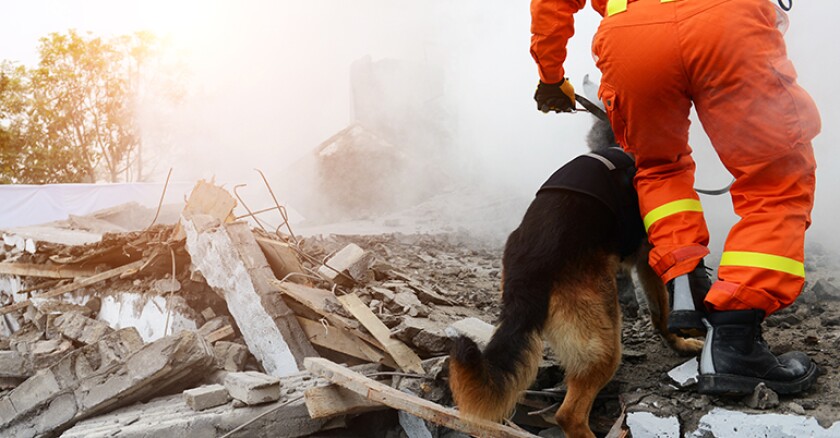The importance of the public-private sector alliance has been recognized in the National Response Framework as an emergency support function (ESF 14). This ESF supports the coordination of cross-sector operations, including stabilization of key supply chains and community lifelines, among infrastructure owners and operators, businesses, and their government partners.
But how does a critical event management platform from Everbridge support a whole community approach to emergency response? The answer is simple: the Everbridge Network bridges the communication and situational awareness gap between the public and private sector, and the Everbridge Incident Zone feature provides the most cross functional and cross jurisdictional emergency information sharing available for emergency response. When leveraging these features together, the gap closes significantly between the public and private sector and citizens are well informed, feel safer no matter where they live or travel, and the whole community approach is achieved.
Everbridge, with over 5,400 global enterprise customers across the public and private sectors, 3,700+ of them public safety agencies, including many in the most disaster-prone and heaviest populated areas in the US, already plays a significant role in bridging gaps within the public and private sectors. While it’s the responsibility of public sector agencies to monitor emergency conditions across their jurisdictions and the impacts an emergency will have on the community, the private sector is monitoring how the same potential emergency conditions will have an impact on their operations and employees. This sets up the perfect opportunity for Everbridge to bridge the communication gap between the two and achieve a whole community plan.
The Everbridge Network provides an information sharing publishing channel where customers can push details of their current preparations, response, recovery and even challenges they may face when a local, regional or national emergency situation develops. This publishing channel is available for all Everbridge customers to view and even re-broadcast this situational intelligence received to their internal and/or external stakeholders. The Everbridge Network contains threshold alerting to automate the most emergent information shared to the network based on location(s) and keywords such as active shooter or tornado. While responding to the challenges of COVID-19, businesses are looking for trusted information which comes public sector agencies. Public sector agencies can learn potential private sector disruptions such as critical infrastructure sites seeing business continuity interruptions due to rising employee cases jeopardizing operational efficiency. Are hospitals requesting additional staffing or being placed on diversions due to conditions or lack of PPE. This information helps keep public sector agencies informed and aware. What about changes in weather conditions or major traffic backups due to a significant accident? When public sector agencies are publishing this awareness, private sector agencies can ensure continuity by re-broadcasting this information to their employees.

The Everbridge Incident Zone publishing channel adds another critical alerting tool to the public sector for not only cross-functional but even cross-jurisdictional awareness. Public sector agencies can publish emergency alerts and conditions using incident zones to create push notifications to the Everbridge mobile safety app. These alerts can be received by any person who has the Everbridge app regardless if they’re signed up for your jurisdictions system or not. If a citizen lives in one jurisdiction but works in another, there’s no need to sign up for both jurisdictions, they’ll receive the alert when entering the incident zone or just by being in the zone when the alert is published. Citizens vacationing in different locations experience the same benefits. Often vacationers or business travelers don’t know where to turn for important life-safety alerts. By leveraging the incident zone channel, transient populations can be protected when alerts are published via the incident zone.

Incident zones play an important part of evacuation planning as well. When issuing evacuation orders, all those in the evacuation area not only receive the alert but get the actionable details they need to properly evacuate to safer locations. Additionally, when large regional and statewide systems are leveraged, incident zones can be placed across multiple jurisdictions to keep evacuees informed of changing conditions that may affect their evacuation routes. In order to lessen the impact on local infrastructure, jurisdictions can place incident zones on highways to inform evacuees of any services that may or may not be available (fuel, shelter availability and food) in their jurisdiction to assist evacuees and their local resources with planning and response.
When choosing your critical event management platform, ask yourself, what more can my system do for my business or agency? How can we benefit from a larger regional or statewide platform to help maximize outreach and partnerships cross-functionally? How does my system instantly improve my business continuity plans and improve the overall safety and awareness to employees and citizens? How will my system interact and notify transient populations in the event of emergency conditions? And finally, how will my system help bridge the gap between public and private sector organizations to gain important situational information each sector requires to keep people safe and organizations running, faster.
ABOUT THE AUTHOR
Brian Toolan joined the Everbridge family in April 2016 as the Technical Account Manager for the AlertFlorida Statewide notification system, and currently serves as the Director of Government Strategy. Brian came to Everbridge after completing a 24-year career in public safety with the State of Connecticut. Brian served as the program manager for the Urban Search and Rescue Task Force where he gained valuable experiencing utilizing the Everbridge platform as a customer.Brian was also the Operations Chief for the State Emergency Operations Center and served the State during historic blizzards, hurricanes, floods, the largest natural gas power plant explosion in the US and other natural and man-made disasters. While serving as the TAM in Florida, Brian has assisted the State Division of Emergency Management in the Florida Emergency Operations Center during Hurricane Matthew and Hurricane Irma.








